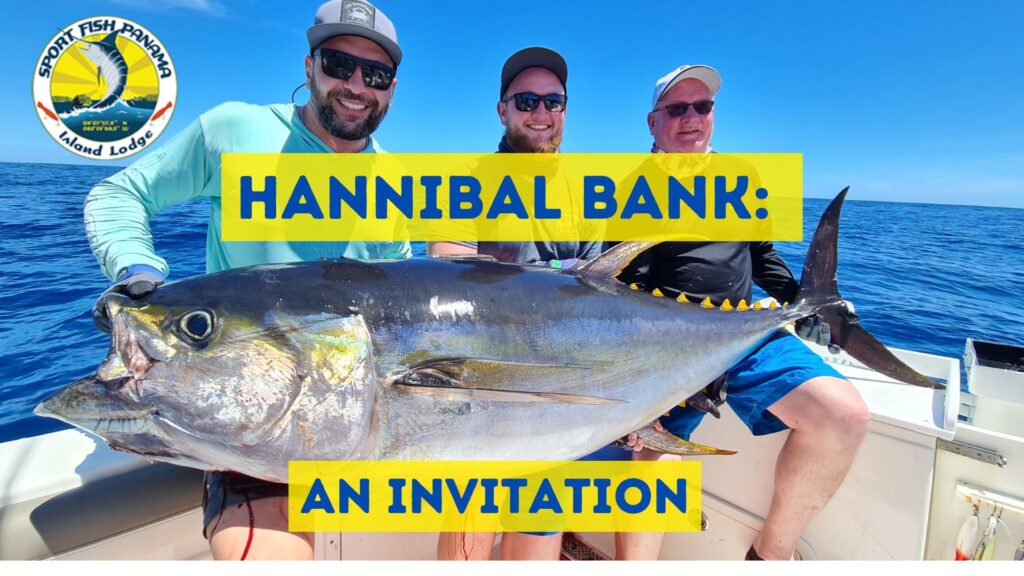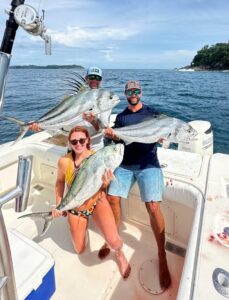The Gulf of Chiriquí is home to one of the world’s best and most well-rounded combinations of inshore and offshore fishing. The Hannibal Bank is one of the Gulf of Chiriquí’s crown jewels.
A high spot that rises to depths of 200 meters off the western coast of Coiba Island, the Hannibal Bank is a beacon for black marlin, hordes of yellowfin tuna, big dorado, blue marlin, sailfish, and more. An icon of the sportfishing world, Hannibal Bank is located just 42 miles from the Sport Fish Panama Island Lodge.
What follows is an introduction to the Hannibal Bank and what makes it so special. More than just a description of an incredibly unique section of sea bottom, consider this an invitation to join us at the Lodge. We’d love to show you what Hannibal Bank is all about.

History
The Hannibal Bank has been capturing the eyes of the sportfishing world for decades. In the early 1980s, the Madam and the Hooker operation spent quite a bit of time here. In the 40 years since boats and anglers from around the world have joined the party.
The Hannibal Bank is right in our backyard. We are frequently reminded by just how special the fishing in this part of the world really is.

When fishing Hannibal Bank, we often see sportfishers from Costa Rica, from Panama City, and vessels that have just transited the Panama Canal. More than the black marlin and the yellowfin fishing, boats from around the world are drawn to the allure of the Hannibal Bank by its history and charm. Many of them anchor in the protected waters around Coiba Island. We even invite some of them to join us for a meal and a room at the lodge.

The Hannibal Bank was discovered in 1914 by a U.S. Navy Survey Ship performing depth readings in preparation for the opening of the Panama Canal. What would you name a high spot that sits off the edge of Coiba Island? When it was discovered by the USS Hannibal, why not the Hannibal Bank?
A Really Special Part of the World
The Bank’s location is part of the reason why it’s such an incredible fishery. Hannibal Bank sits some 12 miles off of the west coast of Coiba Island.
Coiba Island is a national park and a United Nations World Heritage Site. The landscapes on the island are uniquely beautiful and uniquely productive.
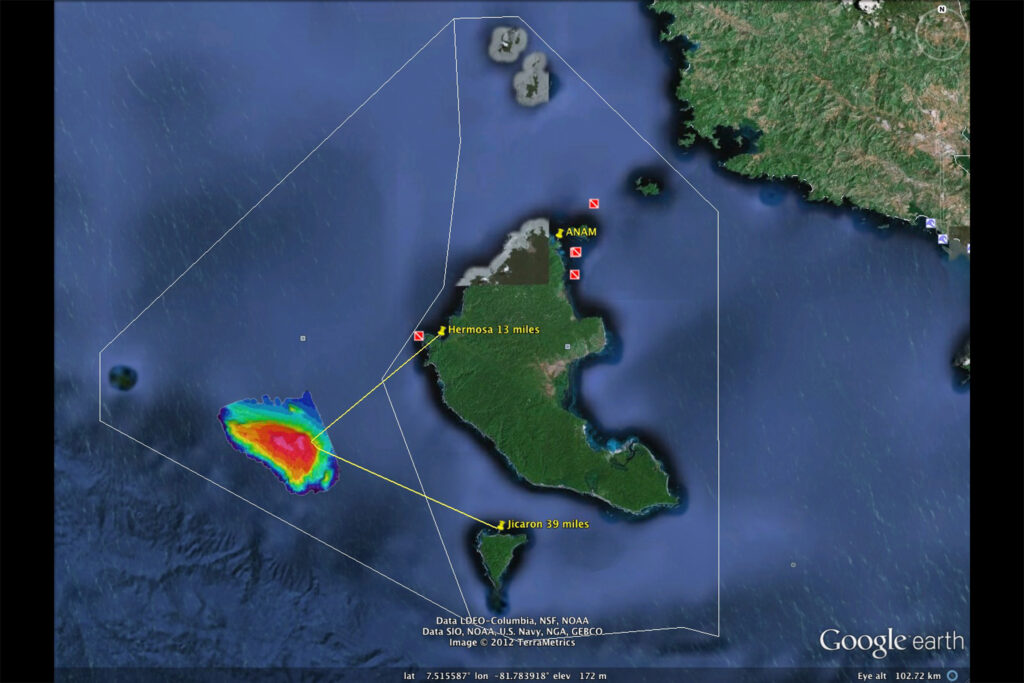
The United Nations describes the cumulative product of the region’s beauty and productivity in the following terms: “marine environments that have characteristics of both a continental and oceanic influence, and include insular marine coastal and terrestrial island ecosystems. This wide range of environments and resulting habitats is a result of the property’s location, close to the edge of the continental platform and at the same time to the mainland. These features combine to produce landscapes of incomparable beauty…”
Just as the landscapes of Coiba Island are diverse, Hannibal Bank’s location makes it uniquely productive. The bank rises from the edge of the continental shelf. It is here that the deep, open Pacific blends with the productive inshore waters of the Gulf of Chiriquí.
When it comes to fishing and wildlife, the results are spectacular. Understanding the interplay of these factors helps explain why this place is so incredible.
Hannibal Bank is actually part of the 100-fathom line that makes up the continental shelf. This shelf runs along the entire aspect of Panama’s Pacific Coast. From east to west, the bank is about five miles wide. From north to south, it spans about two miles.
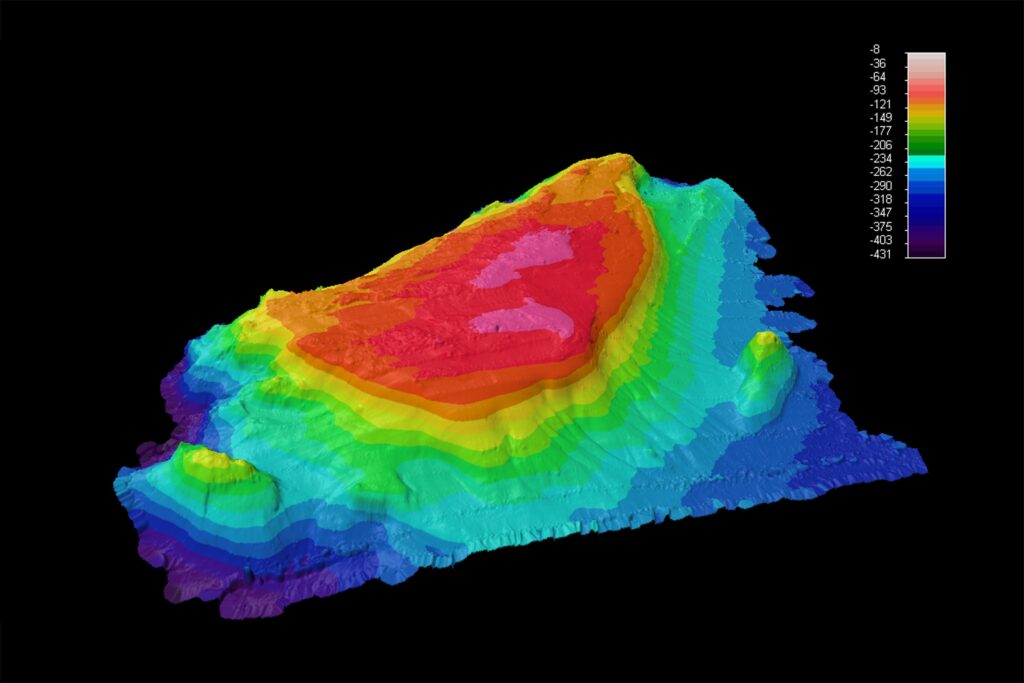
The ocean floor rises from several thousand feet on the southern side up to just over 200 feet deep. Then it levels out to create a mesa-shaped mountain with numerous peaks spread about the seamount that come to within just 120 feet of the surface.
This bottom topography deflects currents toward the surface. In a process known as upwelling, redirected currents bring with them nutrients and oxygen. When these current reach the surface and interact with sunlight, they create blooms of phytoplankton. This is the foundation of the marine ecosystem.
Bait stacks up to eat the plankton. Larger pelagics, like marlin, tuna and sailfish, stick around to eat the bait.
Fishing The Hannibal Bank
Hannibal Bank consistently attracts and holds fish. We fish there with some regularity. What follows is a breakdown of what a day fishing on the Hannibal Bank looks like:
Black Marlin
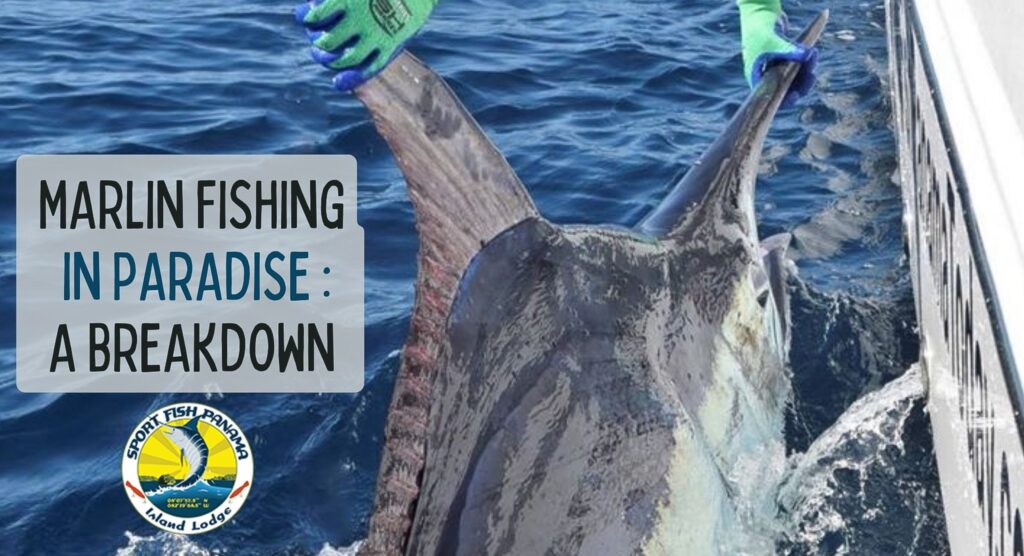
A shallow high spot near open ocean, the Hannibal Bank is textbook black marlin territory. During the late summer (July and August) and toward the end of the year (November through January), hordes of bonito stack up on the bank. When they do, the black marlin fishing can be really, really good. In fact, this part of the world is among the top two or three black marlin fisheries in the northern hemisphere.
The aggregations of bonito on structure are a great thing for us. First, where there is consistent bait there will likely be black marlin. Second, because the bait holds around fixed structure, we know where to find the bait and the fish.
When the black marlin fishing is good on the Hannibal Bank, it allows our guests to concentrate on trying to catch them. We can run straight to the Hannibal Bank, fill up the tuna tubes and be live baiting in no time. The sight of a black marlin accosting a live bait—and the aerial display that takes place upon hook up can change your perspective on fishing… and life.
Beyond these two peaks, we catch black marlin 12 months a year. Anytime we find bait consistently holding on the Hannibal Bank, there’s a shot at running into a black marlin.
Big Yellowfin and Tuna Frenzies

In terms of size and number of yellowfin, there aren’t many places that can match the Gulf of Chiriquí. Hannibal Bank is a great place that consistently produces incredible tuna fishing. And because it is fixed structure, it provides a set point to start the search.
Sometimes we’ll locate schools of tuna up top using the Bird Mode feature on our Simrad radars. This allows us to locate flocks of birds that are following actively feeding schools of tuna. In this way, we often find the tuna frenzies—where there might be acres of yellowfin up top. When that happens, everyone on the boat often hooks up. It can be incredible.
There are often commercial tuna boats anchored on Hannibal Bank. When these boats are working, they will chum tuna to the surface. Our boats will sometimes pull up close to the action and toss blue runner into the mix. This is an interactive, fun way of fishing that doesn’t happen in many places.
When the big tuna are around, we target them with live bonito. Sometimes a big tuna will eat a live bait when we’re marlin fishing.
Blue Marlin, Sailfish, and Dorado
Hannibal Bank also provides some good blue marlin action. We typically find the blues near open ocean, along the edge. Because Hannibal Bank sits on the edge of the continental shelf, where depths drop to thousands of feet, it is perfect for this.
If we’re targeting blue marlin, we’ll do so by trolling our lures from Imperium Outfitters. If we find some floating structure—like a log in open water—or a school of bait offshore of Hannibal Bank, this is blue marlin territory.

This kind of fishing can be really exciting. It’s visual. It allows us to cover ground at 8 knots and we sometimes catch dorado and sailfish as we’re marlin fishing.
An Inshore Morning Around Coiba, an Afternoon on Hannibal Bank- or vice versa
When we run to Hannibal Bank, we often include some time inshore fishing around Coiba Island. Coiba is home to some of the most beautiful and remote landscapes in North America.
On land there are giant saltwater crocodiles, howler monkeys and rainforest. Its rocky coastline is surrounded by giant roosterfish and really big cubera snapper.

Spending some time working the beaches and high spots around the island is a great way to take in some natural beauty while trying to catch bucket list inshore gamefish. It’s also a nice break from getting your arms and shoulders pulled off by tuna on the Hannibal Bank.
